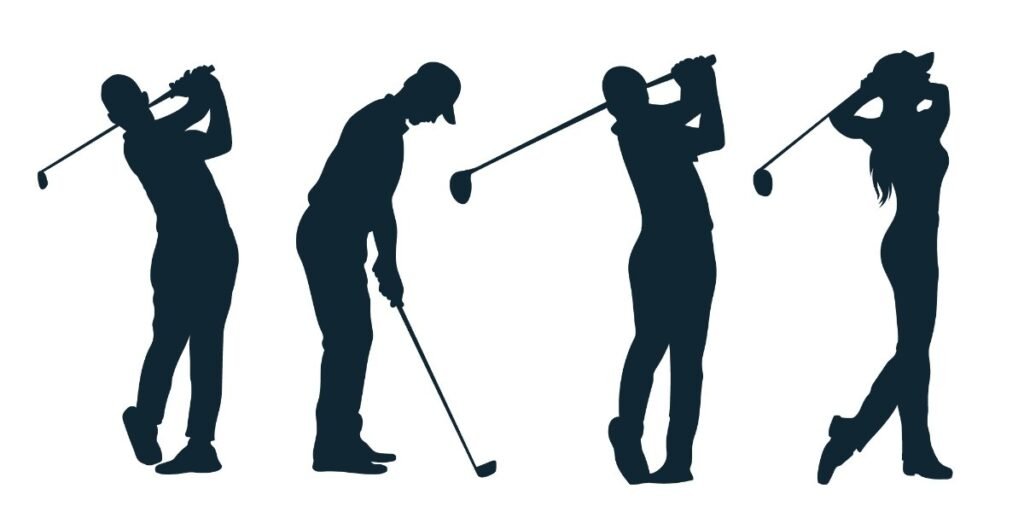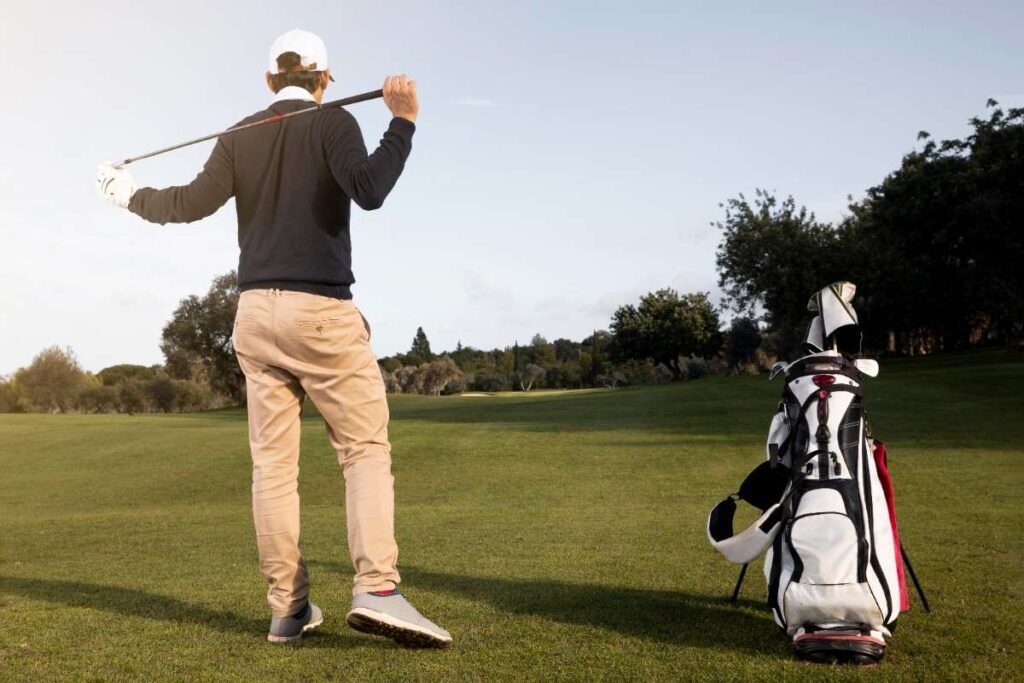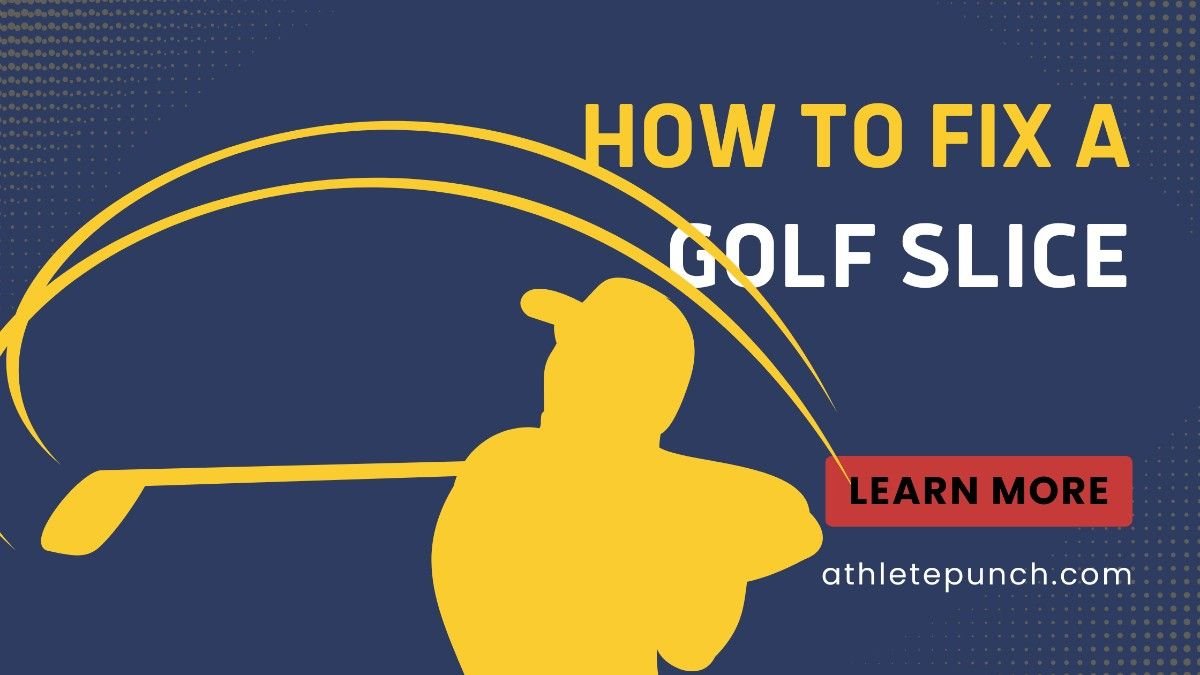Imagine this: You’re standing on the tee, feeling confident about your shot. You swing, and the ball takes off, only to curve dramatically to the right (for right-handed golfers) and land far from where you intended. Frustrating, right? This is a golf slice, which is a mistake that even the best players can make.
To improve your golf game, you should understand how a slice happens and learn how to fix it. This will help you hit straight, strong swings instead of misses.
Golf-playing is a game of precision, skill, and technique. Every golfer, no matter how good they are, wants to make the perfect shot. However, one of the most common issues golfers face is the dreaded slice.
Your golf game will be much better if you know what a slice is, how it varies from a hook, and most importantly, how to fix a slice.
In this complete guide, you will learn everything you need to know to find and fix a golf slice.
What is a Slice in Golf?
An extreme turn from left to right (for right-handed players) or from right to left (for left-handed players) is called a slice in golf. It can be hard to stay on course when this curve makes it harder to hit the ball accurately and at the right distance. The slice is caused by several things, such as an open clubface at contact, a swing path that goes from outside to inside, and not enough clubhead speed.
Golf Slice vs Hook
Before diving into the mechanics of a slice, it’s important to differentiate it from a hook. For right-handed golfers, a slice runs to the right; a hook runs to the left. Though they are mirror copies of each other, a mismatch between the clubface and the swing path causes both. Correcting your swing problems requires an awareness of the variations between a golf slice and a hook.
Common Causes of a Golf Slice
To fix a golf slice, you must first understand its root causes. Here are the most common factors that contribute to a slice:
Grip: An improper grip may lead to an open clubface at impact. A grip that is too weak (where the hands are turned too far to the left for right-handed golfers) can cause the clubface to remain open during the swing.
Swing Path: An outside-to-inside swing path, often referred to as “coming over the top,” is a primary cause of slicing. This path results in a sidespin on the ball, causing it to curve.
Clubface Position: If the clubface is open relative to the swing path at impact, the ball will slice. This can happen if you open the clubface during your backswing or fail to close it properly during the downswing.
Body Alignment: Poor alignment and stance can also contribute to a slice. If your shoulders, hips, and feet are not aligned correctly, it can affect your swing path and clubface angle.

How to Fix a Slice in Golf
Fixing a slice requires a combination of adjustments to your grip, stance, and swing mechanics. Here are step-by-step instructions on how to fix a golf slice:
1. Grip Adjustment:
Check Your Grip: Ensure you have a neutral grip. For right-handed golfers, this means seeing two to three knuckles on your left hand when you look down at the address. Your right hand should sit comfortably on the club, with the “V” formed by your thumb and forefinger pointing towards your right shoulder.
Strengthen Your Grip: If your grip is too weak, try rotating your hands slightly to the right. This can help promote a square or closed clubface at impact.
2. Swing Path Correction:
Practice Inside-to-Outside Swing: Focus on swinging the club from the inside to the outside. Imagine you’re swinging the club along the path of a hula hoop tilted away from you.
Use Alignment Aids: Place alignment sticks or clubs on the Golf field to guide your swing path. Position one stick parallel to your target line and another at an angle to promote an inside-to-outside swing.
3. Clubface Control:
Check Your Backswing: Ensure that you’re not opening the clubface too much during your backswing. The clubface should remain relatively square to your swing arc.
Focus on Impact: Practice drills that help you feel the correct clubface position at impact. One effective drill is to hit shots with a slightly closed clubface, which can help eliminate the open face that causes slicing.
4. Proper Body Alignment:
Align Your Body Correctly: Make sure your shoulders, hips, and feet are aligned parallel to your target line. This helps ensure that your swing path remains consistent.
Square Stance: Adopt a square stance where your feet are shoulder-width apart and your body is balanced. Avoid standing too open or too close to the target line.

Practicing to Correct a Slice
Consistent practice is key to fixing a slice. Here are some drills and tips to help you practice effectively:
1. Grip and Alignment Drills:
Grip Practice: Spend time gripping the club correctly and making practice swings to get comfortable with the new grip.
Alignment Checks: Regularly check your alignment using alignment sticks or a mirror to ensure you’re addressing the ball correctly.
2. Swing Path Drills:
Gate Drill: Place two tees or clubs on the ground just outside your swing path, forming a gate. Practice swinging through the gate without hitting the tees, promoting an inside-to-outside path.
Foot Path Drill: Lay a club on the ground pointing towards your target and another pointing slightly inside your target line. Practice swinging along the inside club to ingrain the correct path.
3. Impact Drills:
Impact Bag Drill: Use an impact bag to practice hitting with a square or slightly closed clubface. This drill helps you feel the correct impact position.
Face Angle Awareness: Hit shots while focusing on keeping the clubface square to the target at impact. Use face tape or a marker to track where you’re striking the ball.

Mental Approach and Course Management
Fixing a slice isn’t just about physical adjustments; it also requires a strong mental approach and smart course management:
Stay Positive: Golf is a challenging game, and improving your swing takes time. Stay patient and maintain a positive attitude, even when progress seems slow.
Course Strategy: When playing, aim slightly left of your target if you tend to slice. This can help compensate for the slice and keep your ball in play. Additionally, choose clubs that you’re comfortable with and that minimize your slice tendency.
Visualize Success: Before each shot, visualize a straight ball flight. Positive visualization can help reinforce the changes you’re making to your swing.
Conclusion
A golf slice can be a frustrating hurdle, but with the right approach and consistent practice, it’s a fixable issue. Your game will be much better if you know what a slice is, how it varies from a hook, and how to use the stages to fix your grip, swing path, clubface control, and alignment.
Don’t forget that every player has problems, but those who work hard to master their swing will eventually do well on the field. Keeping a good attitude and using these tips will help you hit straighter, more powerful shots and enjoy golf to the best.

